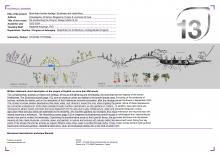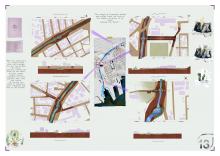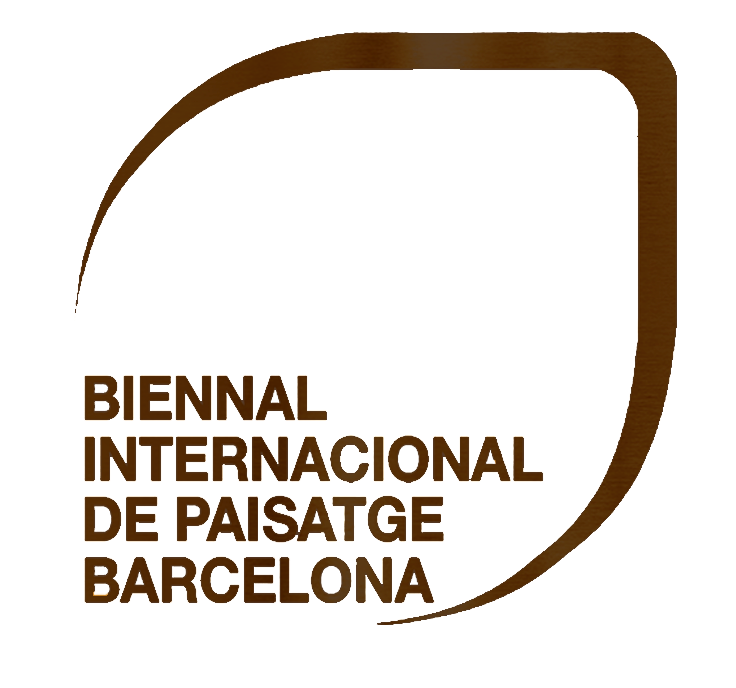


Two complementary projects co-weave one strategy, aiming at strengthening and remediating the more-than-human aspects of the torrent Krafsidonas. The Symbiosis project [page 1/3], aims to create an urban eco-habitat in the torrent riparian area. Focusing on the symbiosis of humans, animals and plants, and on the restoration of the Krafsidonas torrential ecosystem, after the damage caused by floods in September 2023. The concept involves shallow depressions that retain water, and channel it toward the river while irrigating the plants. Some of these depressions are connected underground, while others operate through overflow mechanisms, as rain-gardens or ‘craters’. In addition, trees and plants are introduced to attract insects and birds that were displaced from the area due to gray infrastructure, urban and industrial expansion. Urban agriculture fields and play areas are addressed to the residents, who lost their gardens and orchards; thus social interaction and reconnection with natural dynamics is enhanced. The Hyacinthus project [page 3/3] re-imagines the Krafsidonas torrent through a mythological lens, resurrecting its ancient river god to reclaim the landscape. Channeling the transformative power of the Hyacinth flower, the god casts the bloom into the stream, causing all man-made structures -concrete, pipes, and asphalt- to rupture and entwine with natural matter like leaves and twine. Along four key points of the stream the shrines emerge as organic filtration sites where water is purified through herbs. These ‘crater’-points function both as flood basins and communal gardens [page 2/3], integrating destruction, ritual, and ecological healing into a new kind of urban myth.








